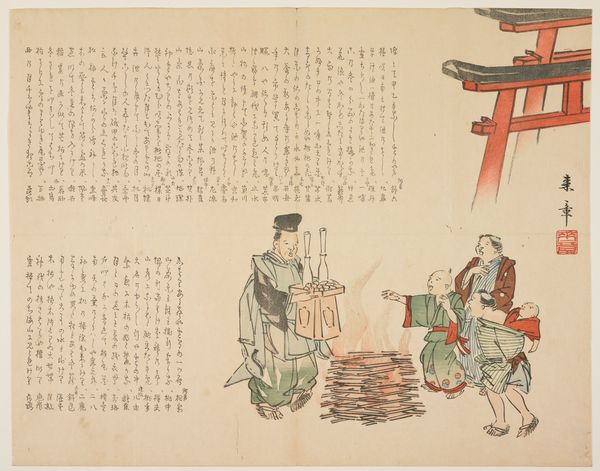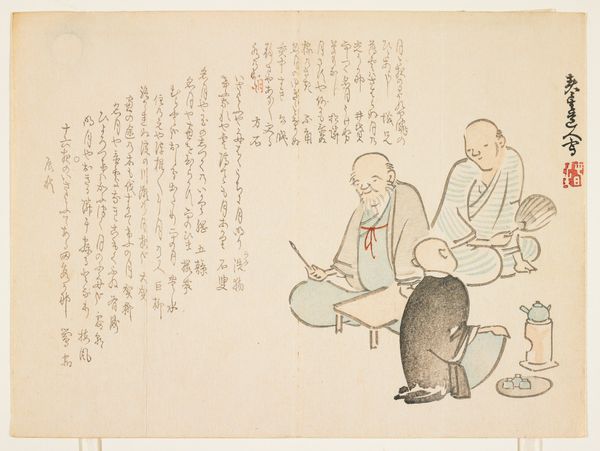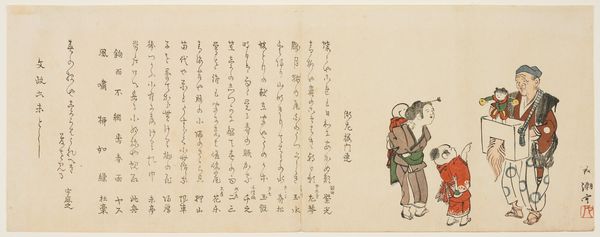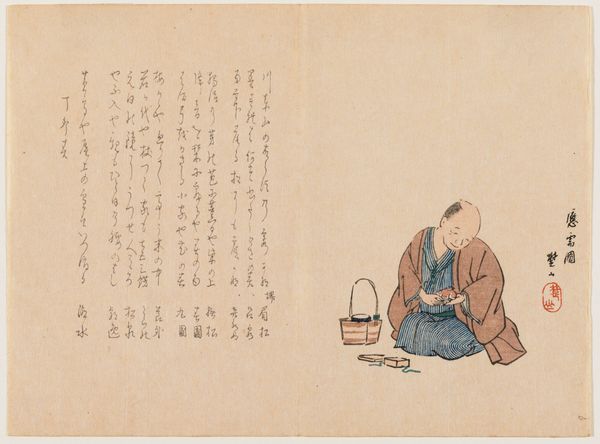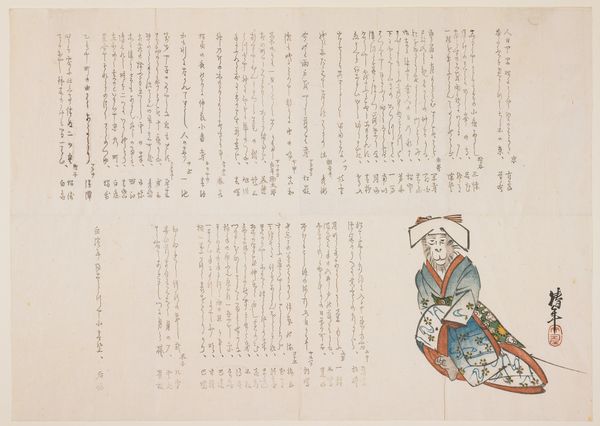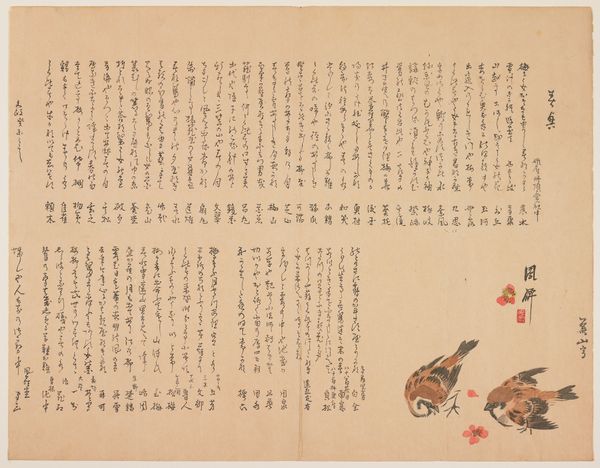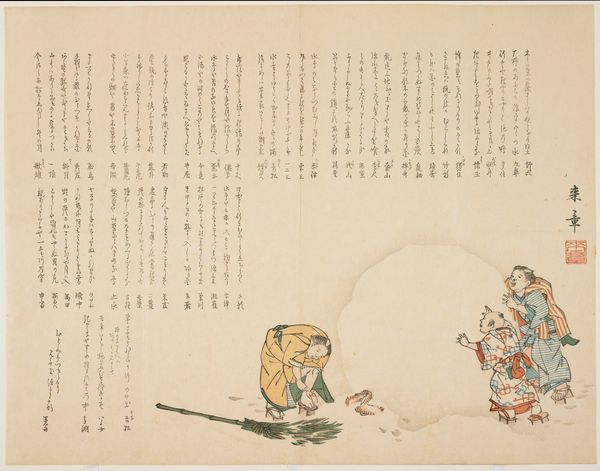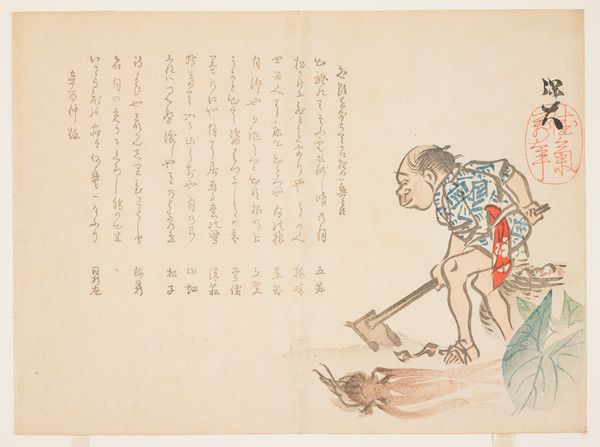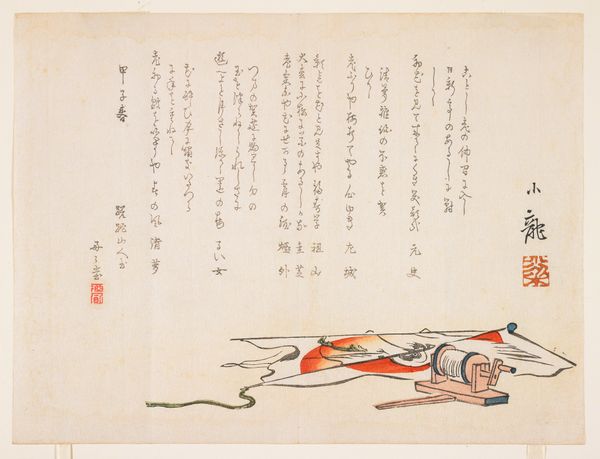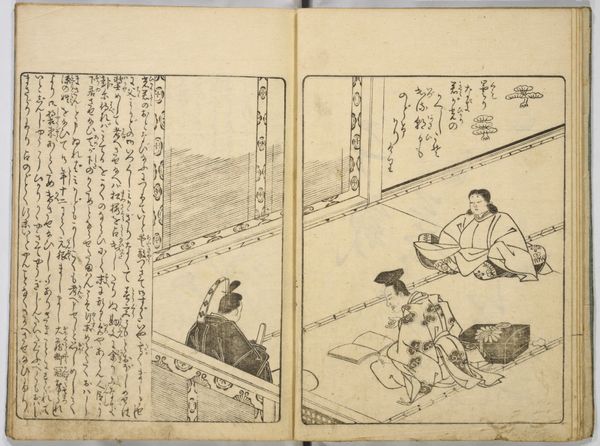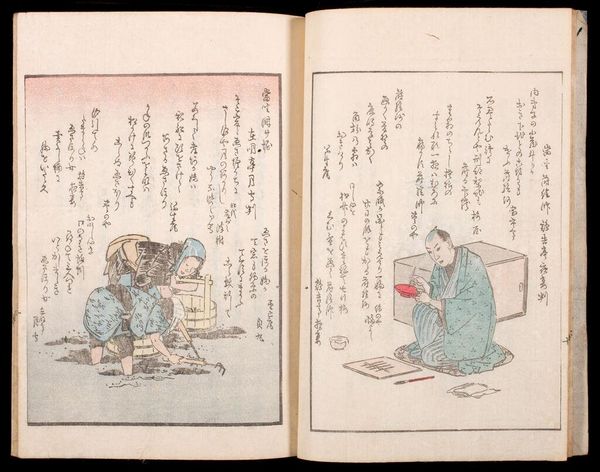
drawing, print, ink
#
drawing
# print
#
asian-art
#
ukiyo-e
#
ink
#
genre-painting
Dimensions: 15 x 19 1/4 in. (38.1 x 48.9 cm) (image, sheet)
Copyright: Public Domain
Editor: Nakajima Raisho's "Tea Ceremony," created in 1824 using ink and print, depicts a genre scene with figures engaged in a tea ceremony. The calligraphy dominates half the image; I'm immediately drawn to that textual element. It gives it a sense of ritualized documentation alongside the visual depiction of the ceremony. What stands out to you in this piece? Curator: Let's consider the materiality. We see ink, paper, and the carved woodblocks used for printing, all of which speak to a specific social context and the means of production. The *ukiyo-e* tradition challenges our assumed categories. Is it drawing, print, or something else entirely? What labor was involved to create it, and for whose consumption was it intended? Editor: That’s interesting. I hadn’t thought about the production side of it so much, but now that you mention it, the woodblock print aspect highlights a sort of accessibility—or perhaps intended accessibility? Curator: Precisely. The repetitive nature inherent in printmaking democratizes art production by disrupting unique 'aura'. It brings art closer to craft. Think about who would have owned this. Would it be an individual patron or merchant wanting to be depicted with educated men? Who controlled the resources to produce and distribute it? Does the calligraphy have a relation to those in the visual space or not? Editor: So you're suggesting it might tell a story about class and access? About how cultural practices and knowledge are being represented, and potentially consumed, at this time? Curator: Exactly. The artwork transcends just the 'ceremony' and hints at the broader material culture of the time and class dynamics in Japan. Editor: It is a new way to view a "traditional" piece, reflecting on all the labor and layers within, instead of pure aesthetics or history. Curator: Exactly, understanding the labor behind such an artwork offers great insight into the social values it once upheld.
Comments
minneapolisinstituteofart about 2 years ago
⋮
Urban sophisticates in 19th-century Japan enjoyed composing poetry and participating in tea ceremonies. This print shows a tea master in a black haori jacket and two guests dressed in formal clothing with exaggerated shoulders and full trousers (kamishimo) over their kimonos. Perhaps the figures are meant to represent the poets whose poems appear on the print. The tea master faces a large hearth which holds an iron kettle used to heat the water for tea. After enjoying tea, it was customary for the guests to admire the wares selected for the occasion by the tea master. One of the guests can be seen adjusting his glasses to get a better look at the flaring tea bowl he holds in his hand.
Join the conversation
Join millions of artists and users on Artera today and experience the ultimate creative platform.
